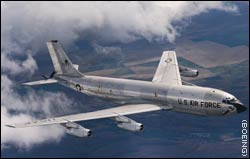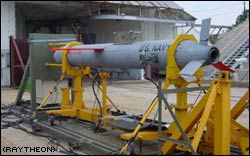
NEW YORK (CNN/Money) -
Don't expect to see a whole lot of brand spanking new weapons and aircraft on display when watching the war in Iraq unfold on television.
The names that entered the American lexicon in 1991 -- missiles like the Patriot and Tomahawk as well as aircraft like the F-15 Eagle and Apache helicopter -- are likely to be featured prominently again, military experts say.
But technology will play an increasingly important role. The new military buzzword coming out of the second Gulf War is likely to be the following clunky acronym: C4ISR. That stands for command, control, communications, computers, intelligence, surveillance and reconnaissance.
"This is not a war where you're likely to have people say, 'Look, that's a brand new airplane.' You're going to see an old green helicopter but it's going to have lots of brand new technology on it," said William Alderman, president of Alderman & Company, a boutique investment banking firm that focuses on the aerospace industry.
Cyber attacks
For example, Boeing's (BA: Research, Estimates) KC-135, often referred to as the Big Crow, is a refueling plane (Alderman called it a "flying gas tank") that entered the Air Force fleet in 1957. But Alderman said this has been retrofitted with electronic radar jamming equipment that can be used to scramble or dismantle Iraqi communications.
 |
|
| Boeing's KC-135 is a refueling plane that has been equipped with electronic jamming devices. |
"This war is not as much about control of the skies but control of information," said Alderman.
Alderman said that other big defense contractors have all done work to enhance older equipment with new technology that will be capable of launching "cyber attacks" on Iraqi infrastructure. He cites Lockheed Martin's (LMT: Research, Estimates) C-5 Galaxy cargo transport plane and Northrop Grumman's (NOC: Research, Estimates) F-14 Tomcat fighter jet and United Technologies' (UTX: Research, Estimates) UH-60 Black Hawk helicopter as three older aircraft models that will play important roles in the war due to technological improvements.
Missiles that can loiter
Another improvement to an old standby is a new version of Raytheon's (RTN: Research, Estimates) Tomahawk missile, called the Tactical Tomahawk. Piers Wood, a senior fellow with defense policy think-tank GlobalSecurity.org, said that these missiles can be programmed with as many as 15 potential targets in mind and have the capability to switch targets after being launched.
 |
|
| Raytheon's Tactical Tomahawk missile can be programmed with as many as 15 targets and change direction after being launched. |
"The Tactical Tomahawk can loiter over a target for hours and has an on-board TV camera," said Wood, a retired U.S. Army lieutenant colonel. "This is a different beast entirely."
Wood said that in addition to more precision guided missiles, the biggest difference between this war and the one in 1991 would be the increased use of unmanned aerial vehicles (UAVs) for surveillance and reconnaissance missions.
Don't go overboard with defense stocks
But should investors, after seeing this new technology on TV, go out and buy the stocks of the big defense contractors? Not necessarily.
Alderman said that if the war were relatively short, there will be only an incremental amount of spending by the military that will wind up in defense companies' coffers. He said if investors want to buy defense stocks they should do so with the long-term in mind because the stocks will be volatile during the war and the impact of any increased spending will be minimal.
| More about Iraq
|

|
|
|
|
"This war will have a trading impact on defense stocks but not a long-term impact on the value of these companies," said Alderman.

|

